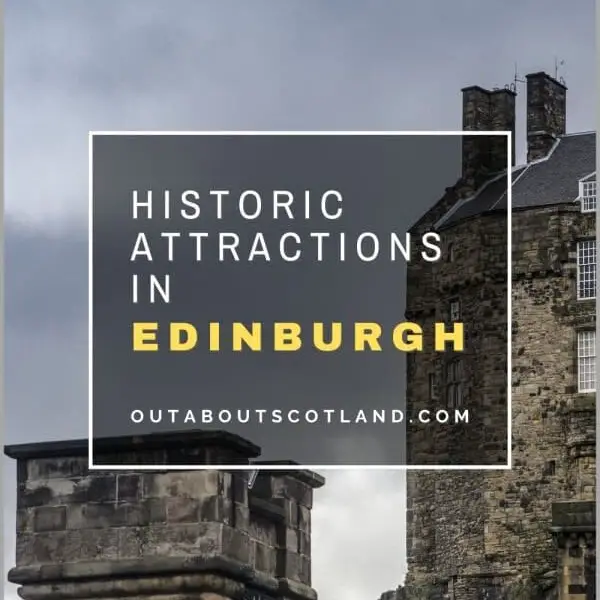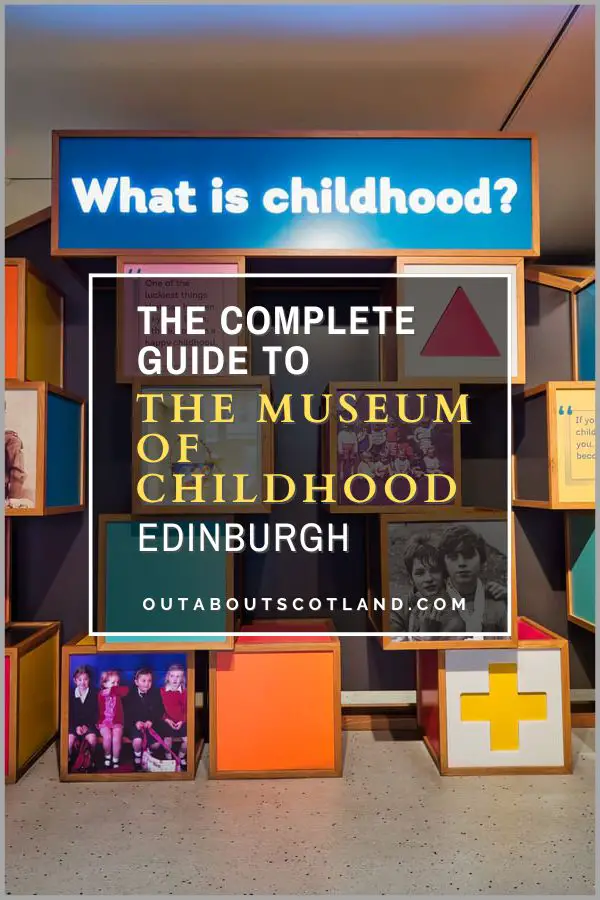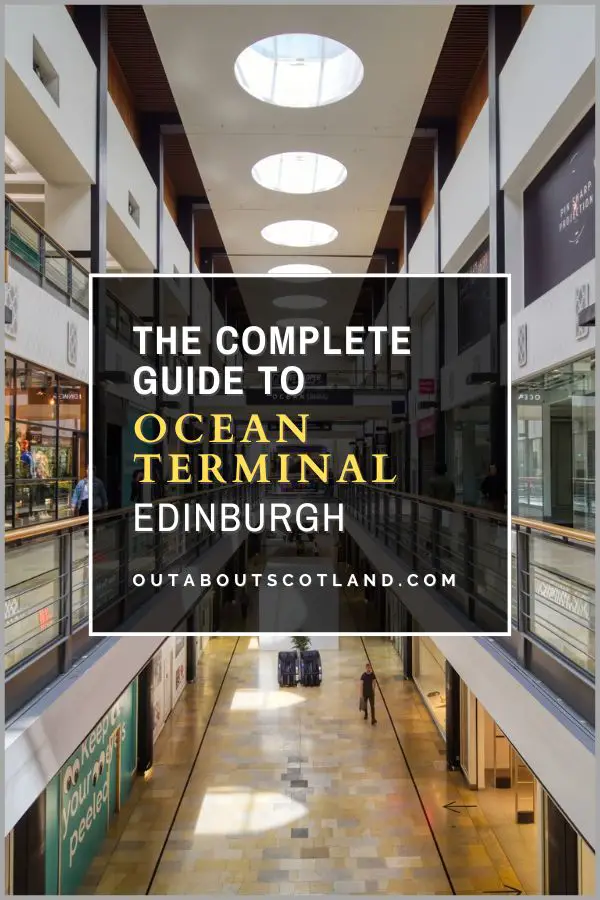Edinburgh is one of the world’s top tourist destinations, and each year, over 4 million people flood into the city to explore places like Edinburgh Castle, Holyrood Palace, and St. Giles Cathedral. There’s much more to these beautiful buildings than first meets the eye, and many of the city’s buildings have fascinating histories.
Discover the stories behind the top historic attractions in Edinburgh with this article, which delves into the beginnings of the city as Scotland’s capital and its transformation into a tourist hotspot.
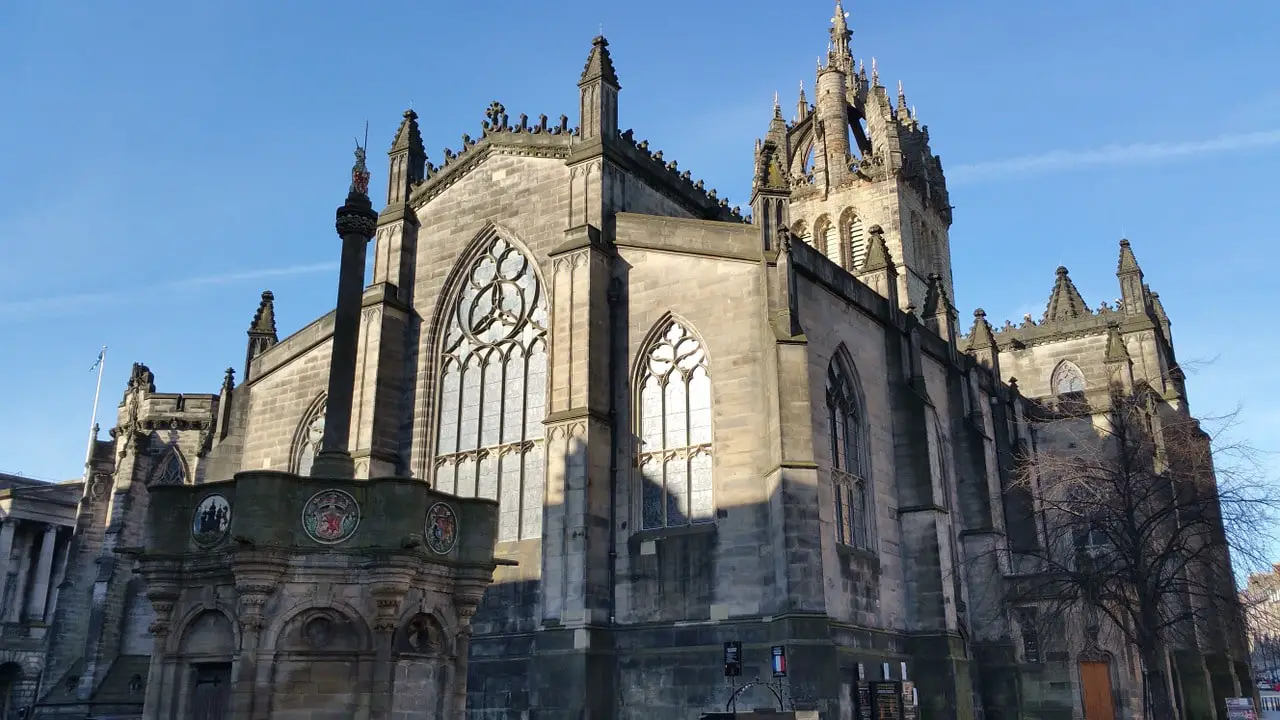
Historic Attractions in Edinburgh
Edinburgh is frequently voted among the world’s top ten tourist destinations, and if you ever get the chance to visit it, you’ll soon understand why so many travel writers like to wax lyrical about this atmospheric city nestled in the southeast corner of Scotland.
From the dramatic peaks of Holyrood Park (a long-extinct volcanic plug) to the impressive Edinburgh Castle, the city offers a dazzling collection of tourist attractions, many of which are hundreds of years old.
There are two parts to the city: the Old Town and the New Town, and while the New Town is worth visiting for its shopping, bars, and restaurants, it’s the Old Town that’s the main draw for tourists. This part of Edinburgh oozes history from every nook and cranny, with The Royal Mile (the mediaeval street that connects the palace to the castle) housing the majority of Edinburgh’s most historic buildings.
While the summit of Holyrood Park offered ancient Scottish tribes some protection, it was the mighty Castle Rock that proved to be the ultimate defensive position, which is why one of the most powerful tribes in Scotland, the Gododdin, built a fort there over 1,300 years ago.
By the 12th century, the beginnings of Edinburgh Castle as we now know it were under construction, and shortly afterwards, David I, the first king of Scotland, established Edinburgh as a royal borough. From then on, the city grew around the castle, with the royal palace being constructed one mile away and the cathedral positioned between them.
There are over one thousand years of history in Edinburgh’s Old Town, and even today it remains one of the best-preserved mediaeval city districts in the world, with most of the antiquated buildings open to the public as tourist attractions,some of which are detailed below.
Edinburgh Castle
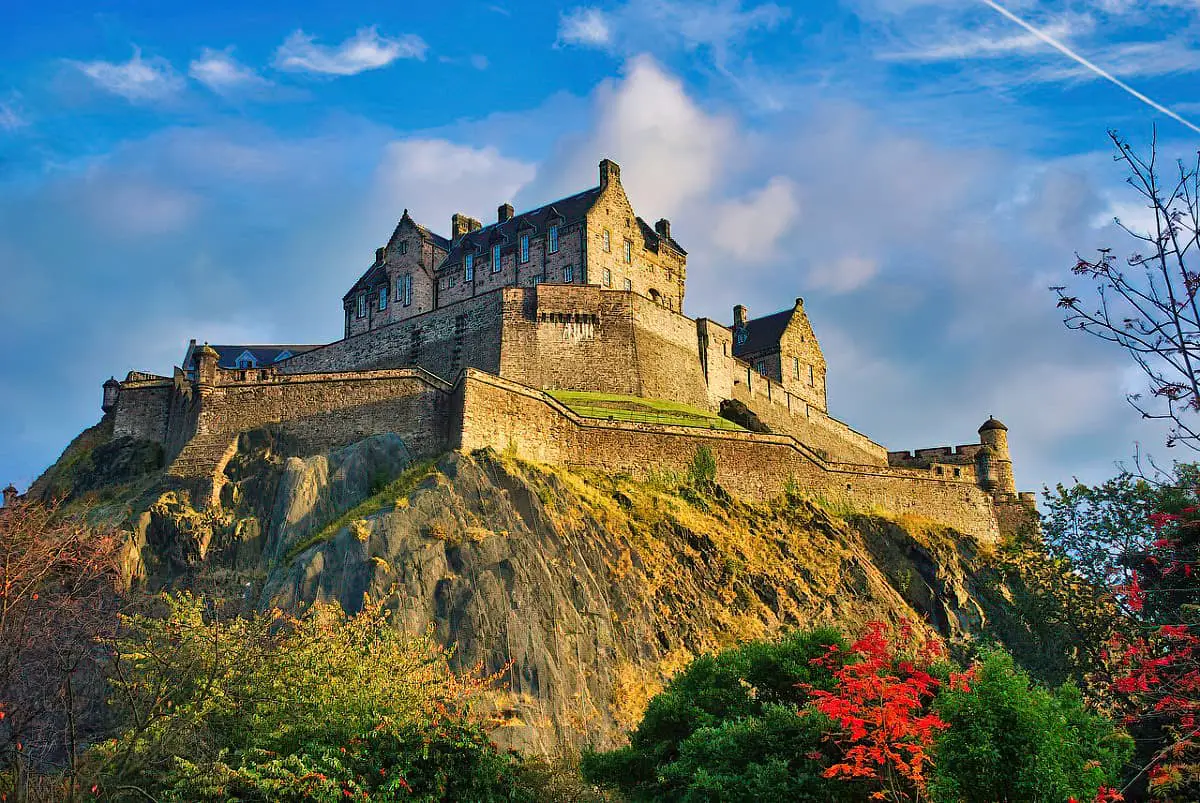
Edinburgh wouldn’t be the city it is today without the enormous castle that dominates the surrounding streets from the top of Castle Rock. Not only is it one of the oldest places in Edinburgh, but it’s also the most-visited tourist attraction in Scotland and ranks alongside Stonehenge and York Minster as one of the most-visited historic attractions in Britain.
As mentioned earlier, there has been a fortified dwelling on top of Castle Rock for well over a thousand years and most likely even longer, though it’s the fort created by the Gododdin around the 7th century that is considered the beginnings of Edinburgh Castle.
The Gododdin named this fort ‘Etin’, which later changed to ‘Edin’, and when English forces captured the fort in the 700s, the name was once again changed to ‘the borough of Edin’, also known as ‘Edin’s borough’.
It was actually English nobles from Northumbria who first decided to use the fort on Castle Rock as a permanent home, no doubt thankful for the protection of the immense sheer-sided cliffs.
By the 10th century the fort had become strengthened with fortified walls and was described as one of the best defensive positions in the country, so by the time the first Scottish King David I was ordained, Edinburgh Castle was an obvious choice for the Scottish seat of power.
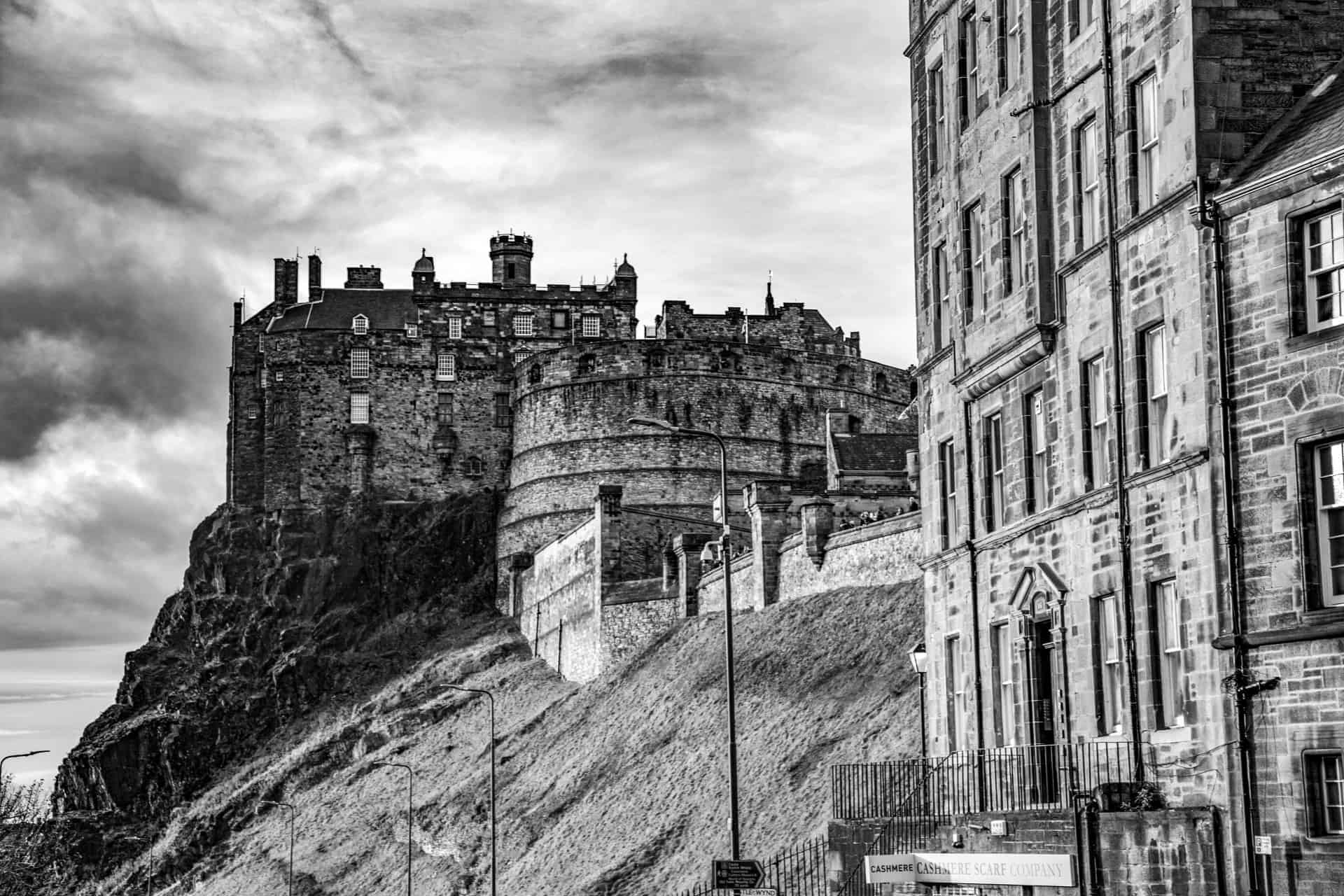
For the next 500 years the castle was extended with various military buildings and royal accommodation, but when Holyrood Palace was built in the 1600s the castle was fully converted into a military garrison, although it changed hands between English and Scottish rule several times.
In fact, there was so much upheaval in Scotland at the time that Edinburgh Castle became one of the most besieged castles in the world, succumbing to 26 sieges in total. That’s why when you visit it today, you’ll see huge defensive turrets and cannon batteries on almost every side, with one of the biggest cannon’s in Britain, Mons Meg, glowering over the castle’s western side.
The six-tonne Mons Meg was built in the 15th century, and in its prime, was capable of firing 150 kg of cannonballs over two miles, but sadly, it was made inoperable after a misfire in 1680.
In later years, Edinburgh Castle changed its role to a military prison with the enormous vaults used to house prisoners from several wars, including the American Wars of Independence and the Napoleonic Wars, but following a mass escape of prisoners in 1811, it was decided to retire the castle as a prison and instead use it as a national monument.
Holyrood Palace
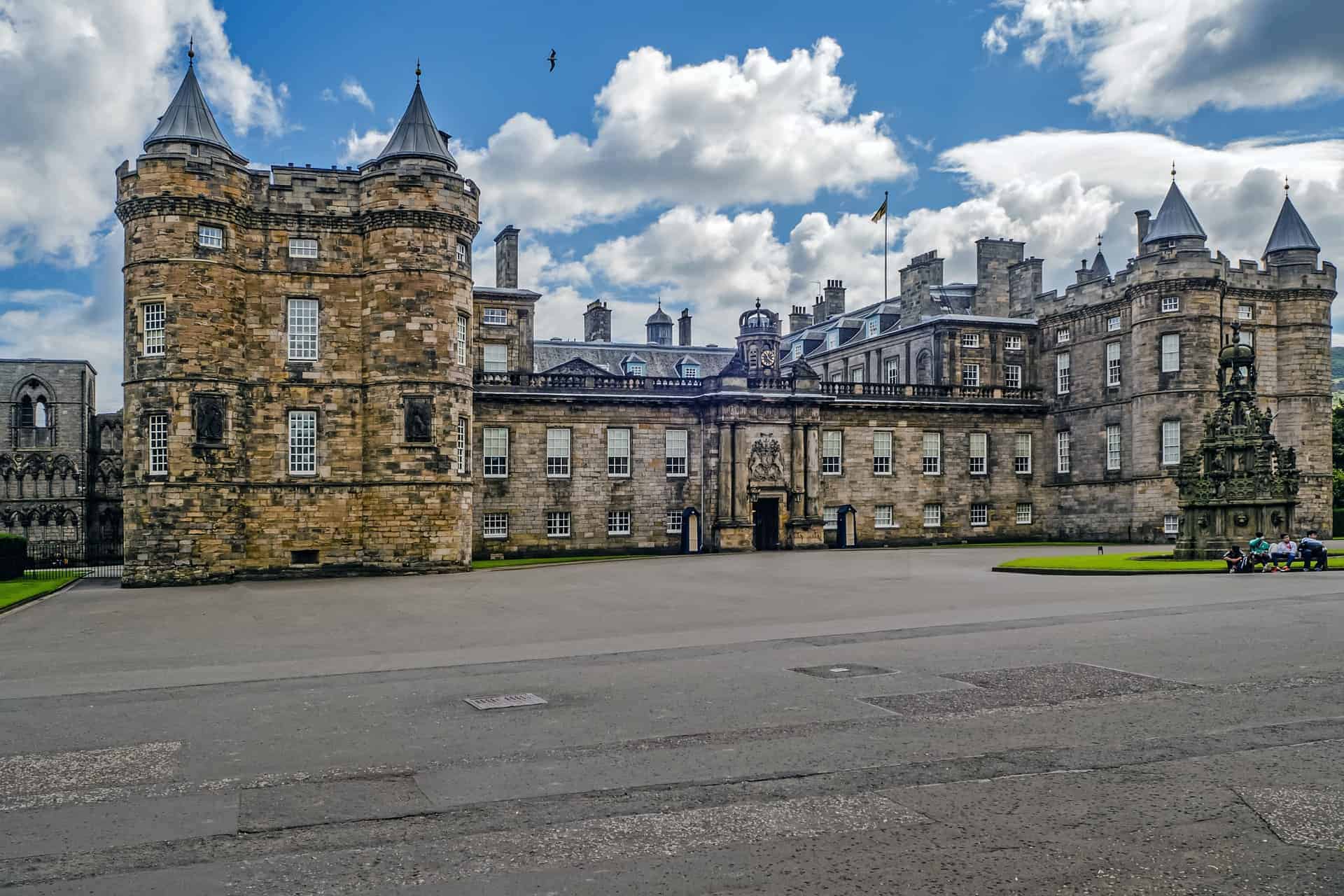
Holyrood Palace (also known as the Palace of Holyroodhouse) is a relative youngster when compared to Edinburgh Castle, but one part of it, Holyrood Abbey, is one of the oldest buildings in the city. The abbey was founded in the early 1100s for Augustinian monks, and being so close to the castle, it soon became an administrative centre.
Some of the first Scottish parliaments were held in the abbey by Robert the Bruce, and several Scottish kings were buried there in later years, while adjacent buildings were built as an official royal residence. However, it was James IV who decided to build the first fortress, which would later become the royal palace we recognise today.
The original palace was built around a quadrangle with a chapel, a gallery, royal apartments, and a great hall. These areas can still be seen today during tours of Holyrood Palace, but the majority of the buildings were constructed in the 17th century, including new royal accommodation on the east and west sides, a large gallery, and a council chamber.
The palace housed a Catholic chapel and college in the late 1600s, but a few years later, anti-Catholic mobs destroyed them. Then, in 1707, England and Scotland were joined together as one union, and the royal family moved to London, which in turn meant Holyrood Palace lost its purpose.
After the Acts of Union, no British monarch used Holyrood Palace as their primary residence, but the royal apartments were still in use during visits to Scotland and are still in use today for one week each year by the King. For the rest of the year, the palace is open to the public for viewing courtesy of the Royal Collection Trust which also manages the excellent on-site shop and café.
The Camera Obscura
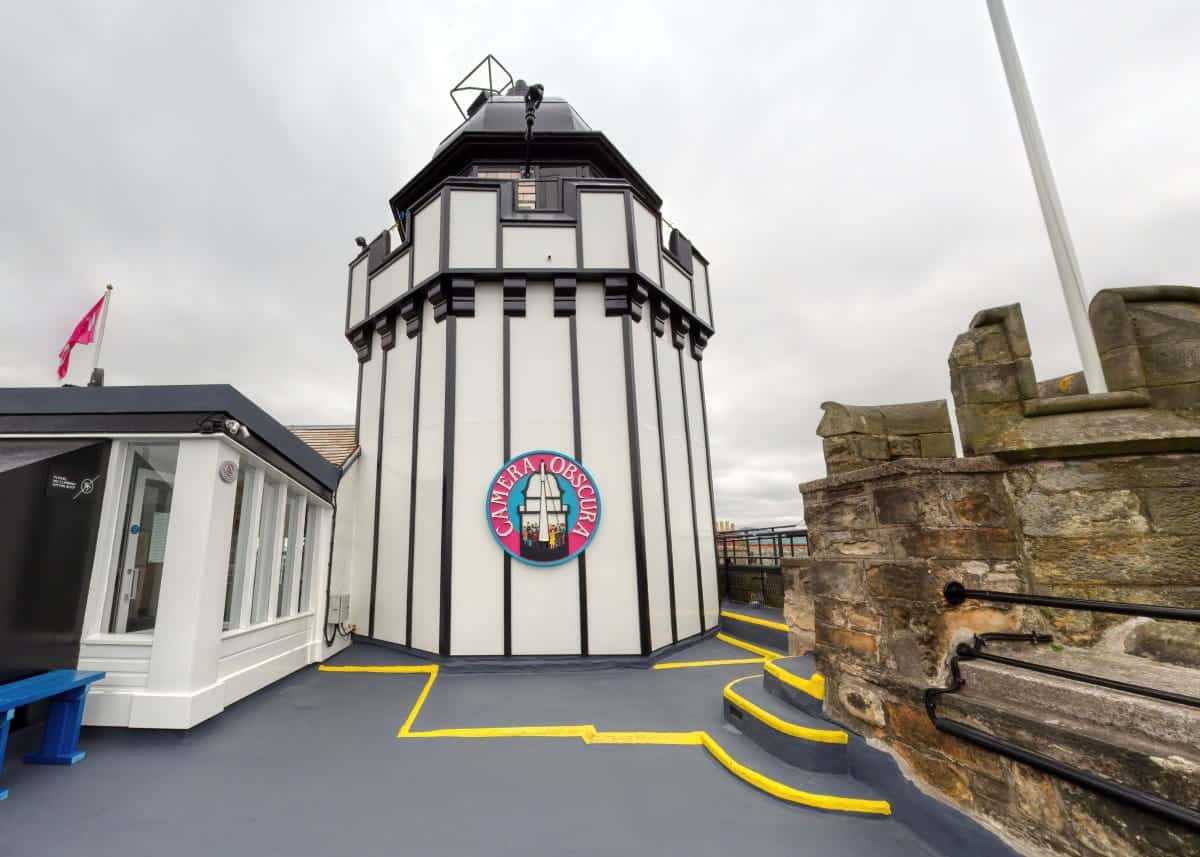
In the early 18th century, Thomas Short, an Edinburgh telescope maker, built a display for his work on Calton Hill, with his largest telescope eventually passing to his daughter Maria Theresa Short in 1827.
Maria continued exhibiting her father’s instruments on Calton Hill for many years, but in 1851 she was forced to relocate the collection after the city authorities demolished her observatory. She then moved the exhibits to their present location on Castlehill, where they were a popular visitor attraction until her death in 1869.
The site then passed into the ownership of Patrick Geddes, a Scottish urban planner and entrepreneur who saw the potential of the ‘Camera Obscura’ as the centrepiece of an exhibit demonstrating the science of urban planning. The site was renamed the Outlook Tower and was rebuilt, with each floor showcasing a different theme related to the science of town planning.
At the very top was the attraction’s premier exhibit, the camera obscura, which still exists today in the same location as it did over one hundred years ago. The camera wowed crowds through its use of light and mirrors which projected an image of the city onto a whiteboard – at least on those rare days in Edinburgh that were bright and sunny!
Even so, the camera obscura pulled in thousands of visitors each year and to this day it remains the highlight of the attraction.
Thomas Geddes died in 1932 and for a time it was uncertain whether the instruments in the tower would be lost to the public forever, but in 1966 Edinburgh University took ownership and maintained the building for the next sixteen years before handing it over to private ownership in 1982.
The Patrick Geddes exhibits were scaled back, and the development of the ‘World of Illusion’ began, although there’s still an exhibit devoted to Geddes on the fourth floor. Thankfully, the current private owners have stayed true to the origins of the very first attraction, so that not only are there amazing visual illusions on every level, but there’s also an element of education about the study of light, photography, and the history of Edinburgh.
The National Galleries of Modern Art
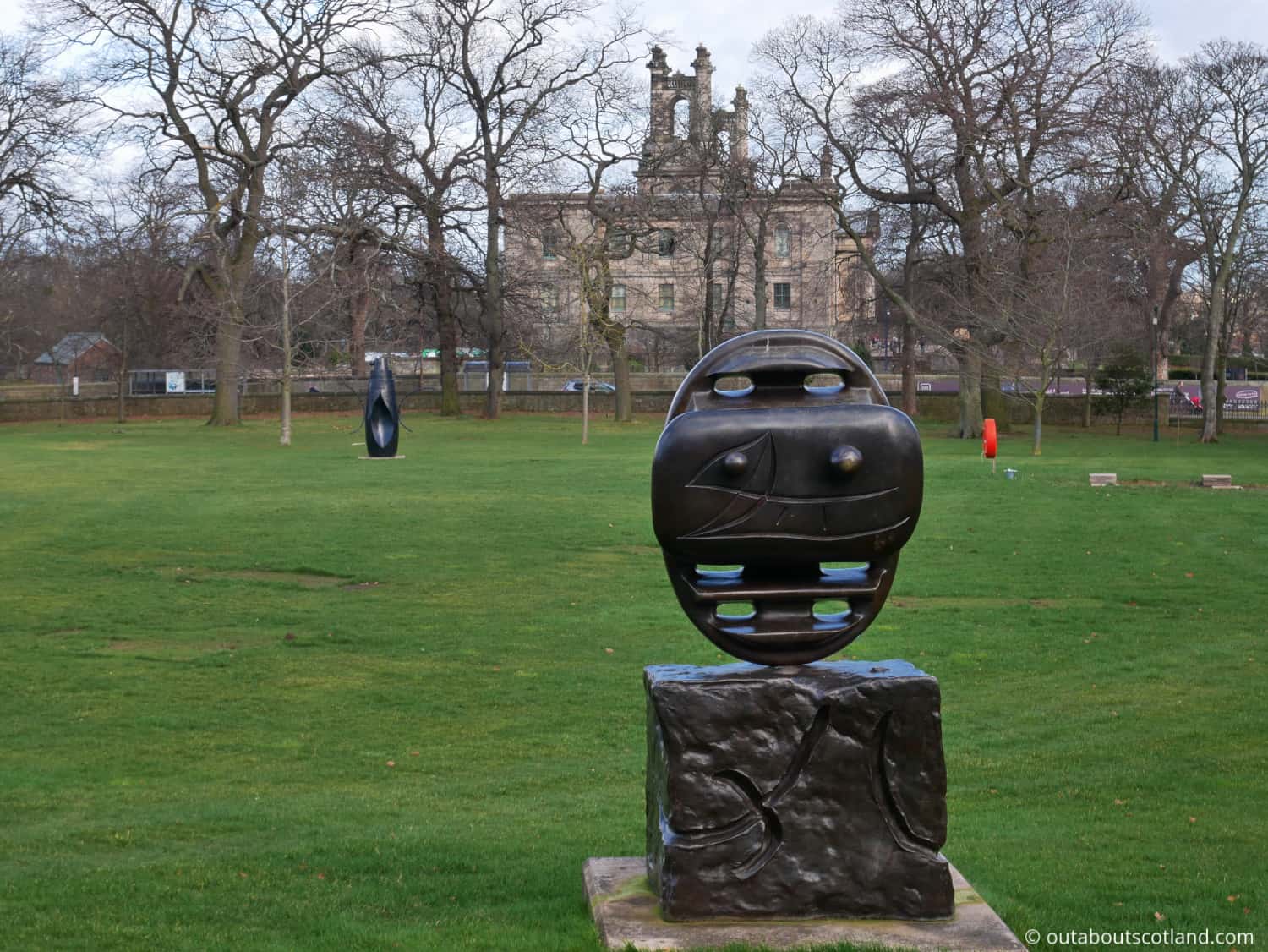
The National Gallery of Modern Art is located one mile from the west end of Princes Street on Belford Road. Although it’s a little further out than the other attractions in this article, it’s still easy to find, and you should be able to walk to it from The Georgian House (see below) in around 15 minutes. There’s also a regular free bus that takes tourists between the National Gallery on Princes Street and the Modern Art Gallery.
The gallery (actually, galleries) are divided into the Modern One and the Modern Two, and both buildings have interesting histories. While the very first gallery of modern art was located at the Edinburgh Botanic Garden, it soon became evident that bigger premises were needed to house the growing collection.
In 1984, the gallery moved to its first location (Modern One) on Belford Road and then expanded into another building (Modern Two) in 1999. Modern One is famous for its ever-changing exhibits, and the permanent collection includes pieces from renowned artists like David Hockney, Tracey Emin, and Andy Warhol.
Like many of the grand Georgian buildings in the west end of Edinburgh, Modern One has two large wings linked by a central hall with an exterior that features Roman-style columns. Before the modern art gallery took over, it was the John Watson School, a facility for fatherless children that William Burn had designed in 1825.
Over the road, Modern Two houses artworks from the permanent collection as well as a continually updated catalogue of exhibits. The building was designed by Thomas Hamilton in 1831 as a hospital for orphans, and it was later used as an education centre before being converted into its present use as a home for modern surrealist artworks.
Both buildings have sizable grounds, but Charles Jencks’ sculpture park, which dominates the lawn of Modern One and features a sizable serpentine mound encircling a crescent-shaped pool of water, is the highlight.
While walking around the grounds, you’ll be able to get up close and personal with artworks including the bronze sculpture ‘Master of the Universe’ by Eduardo Paolozzi, which is based on a drawing of Sir Isaac Newton, and the neon installation on the façade of Modern One by the artist and musician Martin Creed.
The National Portrait Gallery
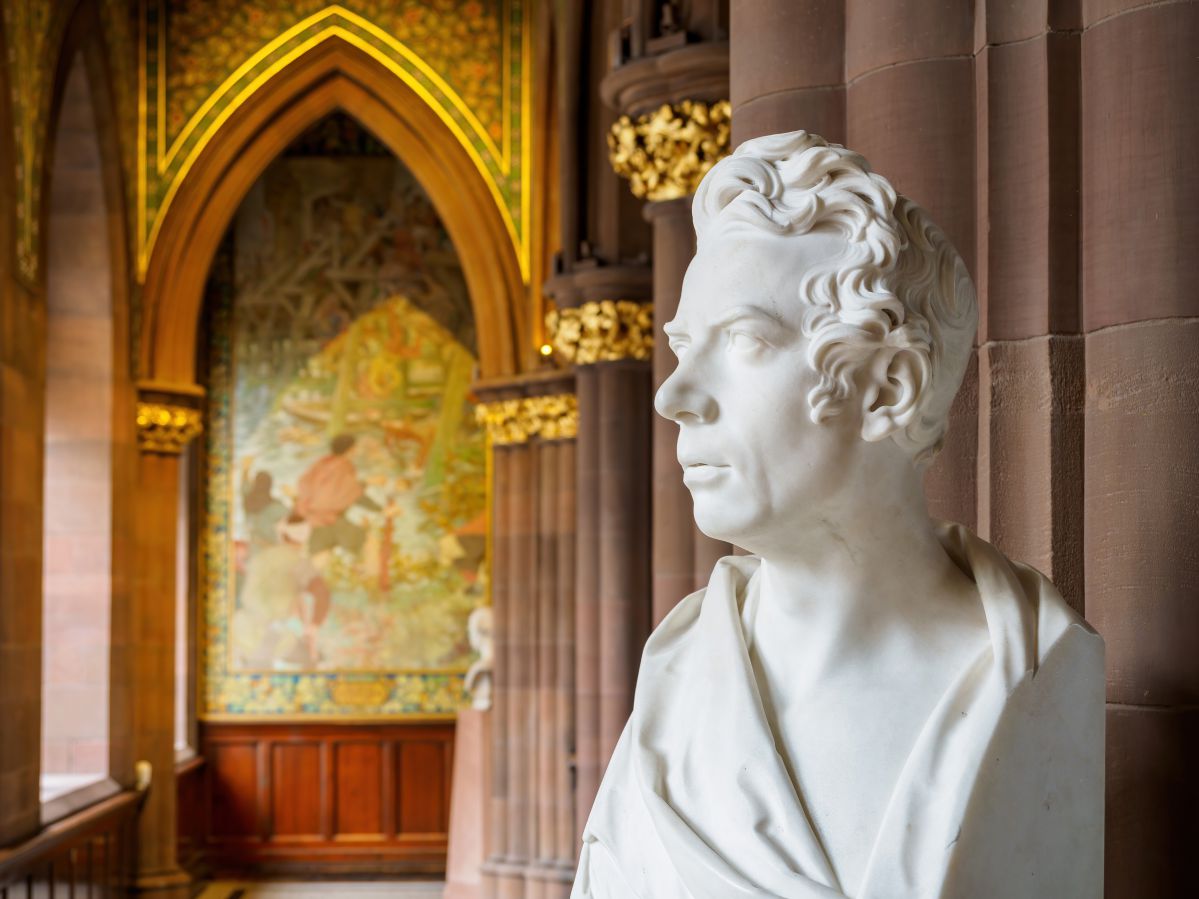
Before the National Portrait Gallery was built, many Scottish portraits had been collected by the 11th Earl of Buchan, but having no official public home for them, it was decided that a national gallery should be built in Edinburgh so that ordinary Scots could connect with their culture and history.
Although the London government refused to step in and fund the construction of the gallery, the owner of The Scotsman newspaper, John Findlay, donated the entire cost of the gallery (£50,000) at his own expense. Note that this donation was given in 1856 and £50,000 in today’s money is over £5.5 million!
As the construction was in private hands and not under government control the architects were given free rein with its design, and it’s for this reason that one of the grandest portrait galleries in the world now resides in Edinburgh (and thanks to an extensive renovation in 2011, it’s also one of the largest).
Edinburgh’s portrait gallery opened in 1889, which makes it the oldest purpose-built portrait gallery in the world, and since that time it has been extended several times so that it now comprises 5,672 square metres and houses more than 850 portraits.
The gallery also contains one of the largest collections of early photographs in the world, and in total, there are over 38,000 photos from the earliest days of photography, many of which document the construction of some of Edinburgh’s most famous tourist attractions, such as The Scott Monument.
If you’d like to visit the Scottish National Portrait Gallery, you’ll find it on Queen Street, a couple of blocks behind St. Andrews Square. You can’t miss it as the red sandstone stands out against the dark grey granite of the surrounding buildings, but if you’re not sure where to go, you can hop on the National Gallery bus, which runs every hour between 11 a.m. and 5 p.m. from the Scottish National Gallery in Princes Street Gardens.
The Scottish National Gallery
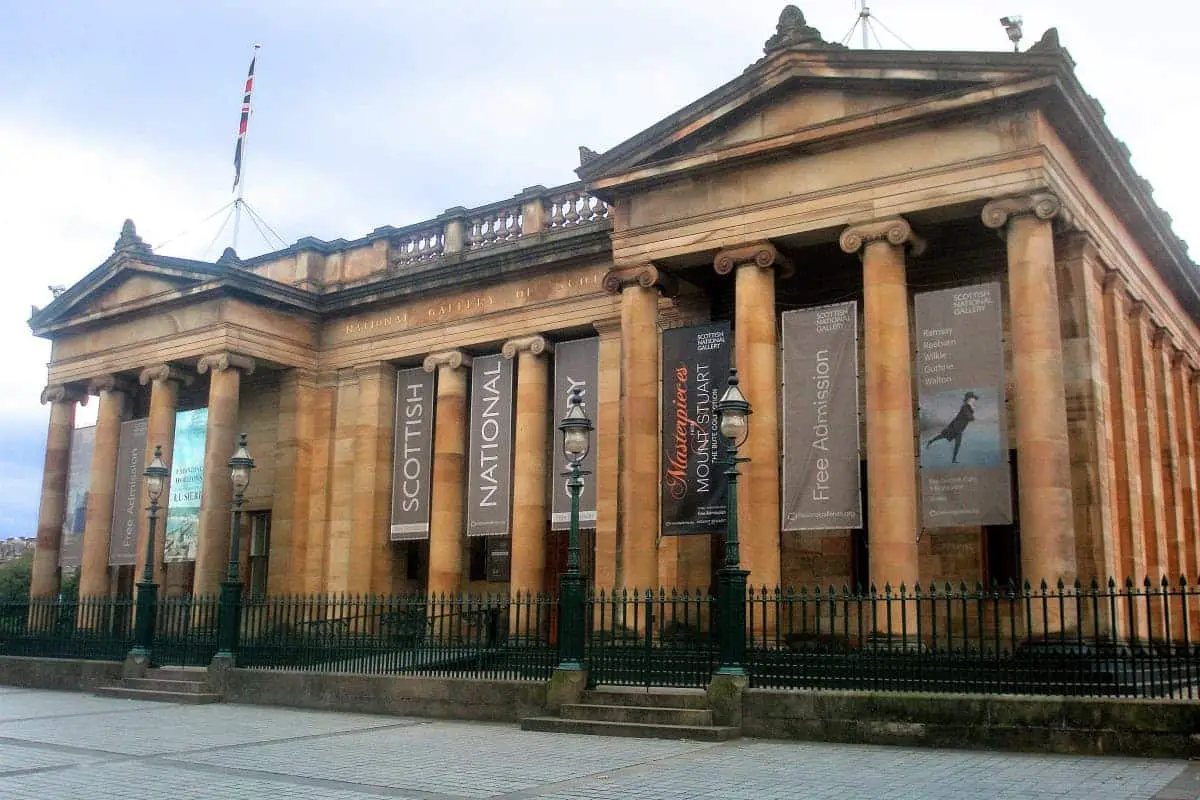
The present Scottish National Gallery building was designed by celebrated architect William Playfair to house the national art collection of the Royal Scottish Academy (RSA). Playfair died in March 1857, so he never got to see his completed masterpiece as the gallery didn’t officially open until 1859, but it housed the national collection until 1912, when the RSA moved into the adjacent Royal Scottish Academy building.
After extensive remodelling, the National Gallery re-opened with an emphasis on displaying a collection of Scottish and European art, and it continues to display many of the same artworks to this day.
By 1970, it was decided that additional storage space would be required for the ever-growing collection, so an extensive series of basement galleries were constructed, and in the early 2000s, an underground connection was made to the RSA so that the separate buildings in effect became one gallery complex.
This underground area is particularly popular with both tourists and locals as it houses an excellent restaurant and café along with a shop that sells copies of some of the artwork that can be seen in both galleries.
The Scottish Parliament Building
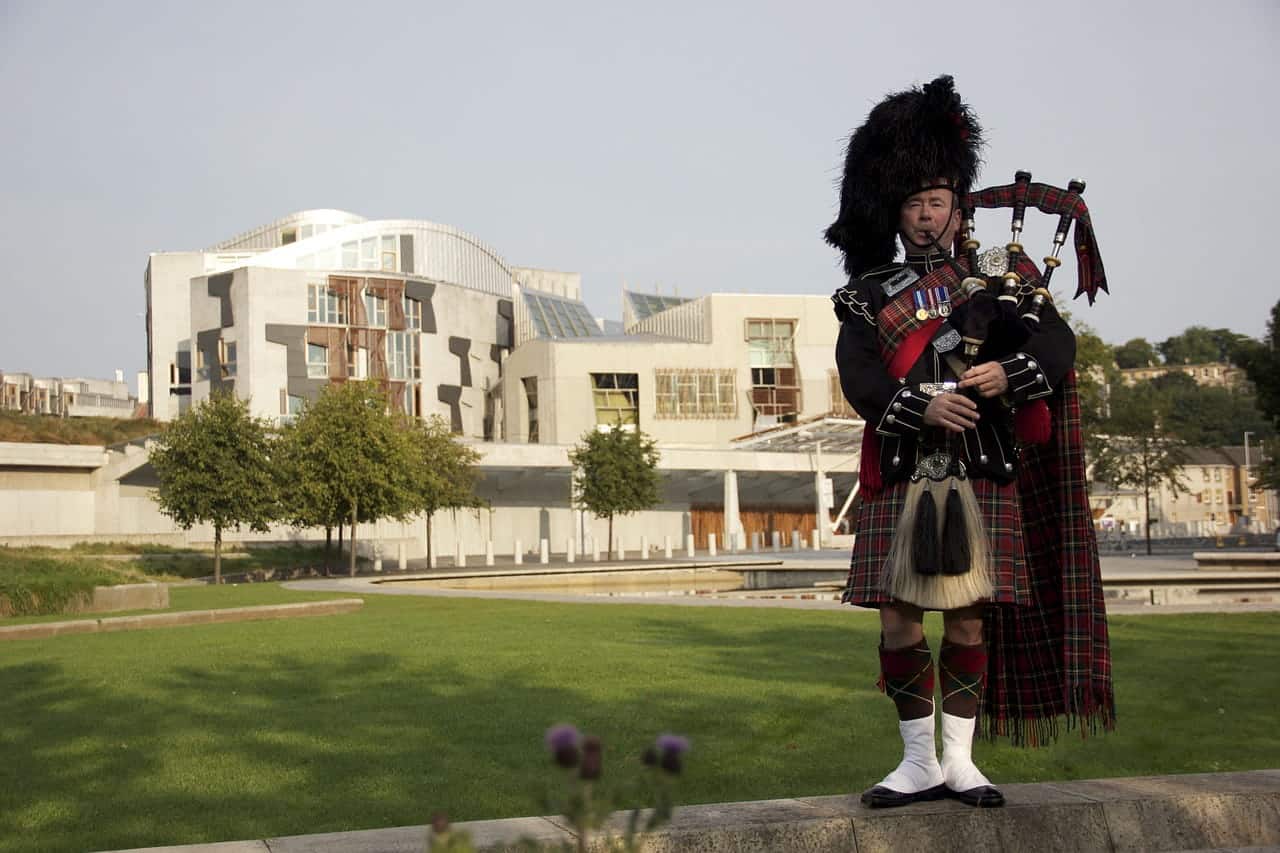
The Scottish Parliament Building is situated opposite Holyrood Palace at the bottom of the Royal Mile. It’s not quite a ‘historic’ building because it was only formally opened in 2004, but its history stretches all the way back to 1707 when the Acts of Union meant Scotland’s parliament moved from Edinburgh to London.
It took 290 years of political pressure to return Scotland’s parliament to its home city, but the new building was mired in controversy from the start due to its unusual design and the huge overrun of its budget, which was a ten-fold increase in its original estimate.
Initially, three sites around Edinburgh were considered as possible locations for the building, but a last-minute entry from the site of the Scottish and Newcastle brewery eventually won favour with the city council. An international competition was subsequently organised in 1998 to create a design for what would become one of the most important buildings in Scotland, and eventually the Spanish architect Enric Miralles was chosen.
Although many people were in favour of Miralle’s unusual abstract design, the cost of the building’s construction spiralled from an initial estimate of £40 million to a final cost of £430 million, with a completion date that was three years behind schedule. Even so, the building won several international awards for its architecture.
On non-sitting days (usually Monday, Friday, and weekends), visitors can view the main hall and access the public galleries of the debating chamber and the main committee rooms.
Guided tours are also available on non-sitting days which allow visitors to access the floor of the hall, the garden lobby and the committee rooms. If you’re thinking of visiting please note that due to security restrictions some areas may be cordoned off without notice.
John Knox House

John Knox House is one of the oldest medieval buildings on The Royal Mile, located almost midway between the castle and the palace. If you’re not aware of John Knox, he was a Protestant preacher who gave sermons at St. Giles Cathedral and he was very critical of Mary Queen of Scots.
The house contains a museum that contains artefacts from the time of Knox as well as informative displays about the house’s other famous inhabitant, James Mossman. Visitors can explore the restored building across two floors, with the bottom half containing the Scottish Storytelling Centre and exhibitions about Edinburgh in the 1500s, and the upper floor featuring restored furniture and artworks from the time of Mossman and Knox.
Knox was a religious man, so it’s unlikely that he would have commissioned the house’s numerous embellishments which were popular among the wealthy residents of Edinburgh in the 15th century. These include an ornate wooden gallery and hand-painted ceilings.
Instead, it’s more likely that they were installed by the 16th-century goldsmith James Mossman, the loyal supporter of Mary Queen of Scots, who was hung, drawn, and quartered for creating counterfeit coins during the ‘Lang Siege’ at Edinburgh Castle in 1573.
James VI of Scotland received the house as a gift after his passing, and several affluent families lived there until the 1600s and 1800s, when neglect caused it to fall apart. Thankfully, the building’s historical significance prevented its demolition in the late 1800s, and the Church of Scotland then took control of it.
Today, the house offers self-guided tours around its restored rooms, where visitors will discover the story of one of the most critical times in Scotland’s history. See the official Scottish Storytelling Centre page for the latest opening times and admission prices.
Gladstone’s Land
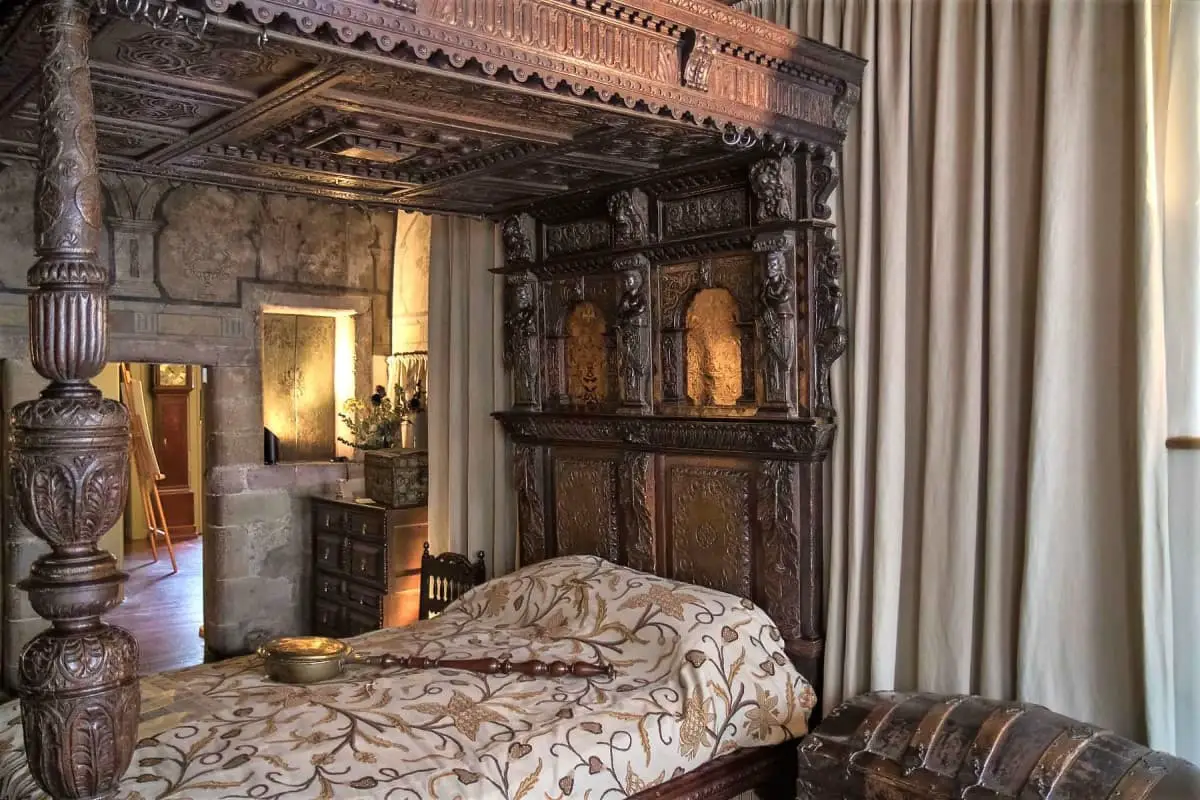
You’ll find this attraction tucked away in the Lawnmarket area of the Royal Mile, near the Castlehill roundabout. Gladstone’s Land was built in 1550, but it was only after extensive refurbishment in 1617 by the merchant Thomas Gledstane that it was marked out as a home for Edinburgh’s wealthiest residents.
Gledstane had the foresight to rent out separate parts of the building, and we know from public records that merchants, ministers, and guild officers lived there before the construction of the New Town. In the cramped conditions of the 1600s, there would have been entire families crowded into single rooms, with tradespeople and merchants taking residence on the lower floors and the wealthy living on the middle levels.
The very poorest, meanwhile, had to suffer with living at the top, where every bucket of water and sewage had to be laboriously carried up and down several flights of stairs.
Due to the height of the Old Town’s buildings, the poor often threw their buckets of human waste out the window, which resulted in a cry of ‘gardyloo!’ and a flood of raw sewage. Hence the reason Edinburgh gained the nickname ‘Auld Reekie’.
By the 20th century, Gladstone’s Land had been condemned and was listed for demolition, but thankfully the National Trust recognised the importance of the building, and over the course of the following years it was fully restored.
St. Giles Cathedral
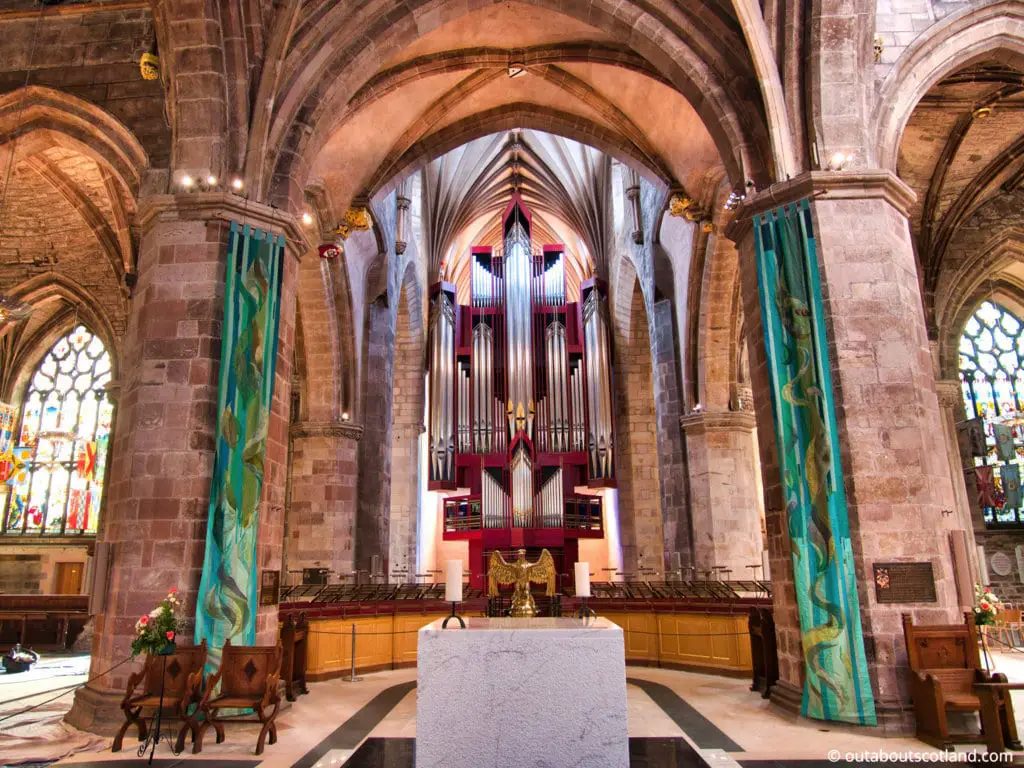
St. Giles Cathedral is one of the most popular tourist attractions in Edinburgh, and its huge Gothic spire is one of the most recognisable features of the city skyline. The cathedral dates back to 1124, when it was founded by King David I, and it was actually built on the very edge of Edinburgh, but of course, the ‘edge’ of Edinburgh is now several miles away.
According to legend, St. Giles was a Greek hermit who lived in the forests of the south of France before becoming a monk and then an abbot. After St. Giles was canonised, he became the patron saint of lepers, and Edinburgh’s cathedral was dedicated to him, most likely because leprosy was so prevalent in Scotland at the time.
The original building was almost entirely destroyed by a fire in the late 1300s, but the large central pillars survived, and the building that we see today was built around those original stone columns. At that time, St. Giles had not achieved cathedral status and was instead a collegiate church, and it wasn’t until 1633 that Charles I made it the cathedral of the Diocese of Edinburgh.
The building was extended several times and new chapels were added, including the Thistle Chapel, which is reserved for use by an ancient chivalrous order, and a memorial chapel for the victims of WWII. St. Giles is still an active place of worship, so entering it might not be possible during times of prayer, but during the week, tourists are free to explore its chambers and halls.
The Georgian House
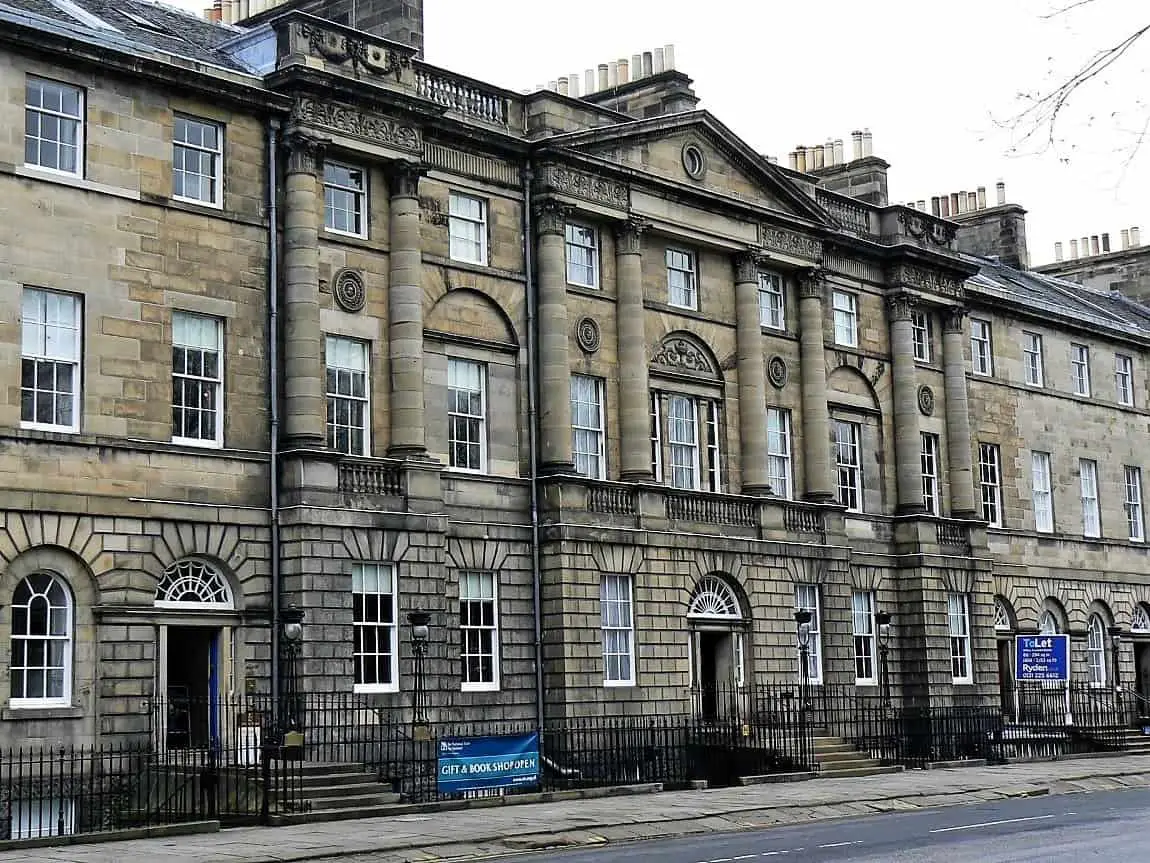
The Georgian House is located a few blocks north of the junction of Princes Street and Lothian Road on the northern edge of the private gardens of Charlotte Square. Although it was a private residence for almost 200 years, the Georgian house is now under the control of the National Trust for Scotland and is accessible to the general public.
The origins of the building began with the New Town, which was built north of the dilapidated Old Town in the 18th century. James Craig, an architect, created this area of Edinburgh using a grid system that connected the two sizable squares of St. Andrews Square and Charlotte Square with George Street, Queen Street, and Princes Street.
The Georgian House was primarily designed as an exclusive townhouse for Edinburgh’s wealthiest residents, and it’s an impressive building even by today’s standards. It was built in 1796 and is typical of townhouses of the era, with five floors including a kitchen and a servant’s room at the bottom and large dining rooms, drawing rooms, and bedrooms on the floors above.
The museum is set over five levels from the basement to the third floor and you’re free to walk around the house at your own pace and head in any direction you like, but it makes sense to start at the bottom and work your way up through each floor.
The décor and furniture on each level are just as they would have been back in the early 19th century which gives you a feeling of walking back in time as you wander through each room. Inside the Georgian House, you’ll see lots of original pieces of silverware, bone china, glassware, and paintings, and you can see just how opulent the lifestyles of the rich were, with dining and drawing rooms laid out ready for one of the many cocktail parties they would have held.
There are also glimpses into the lives of the servants who would have worked tirelessly in the basement and kitchens, and interactive touchscreen displays help to bring the stories of the servants back to life.
The Scott Monument
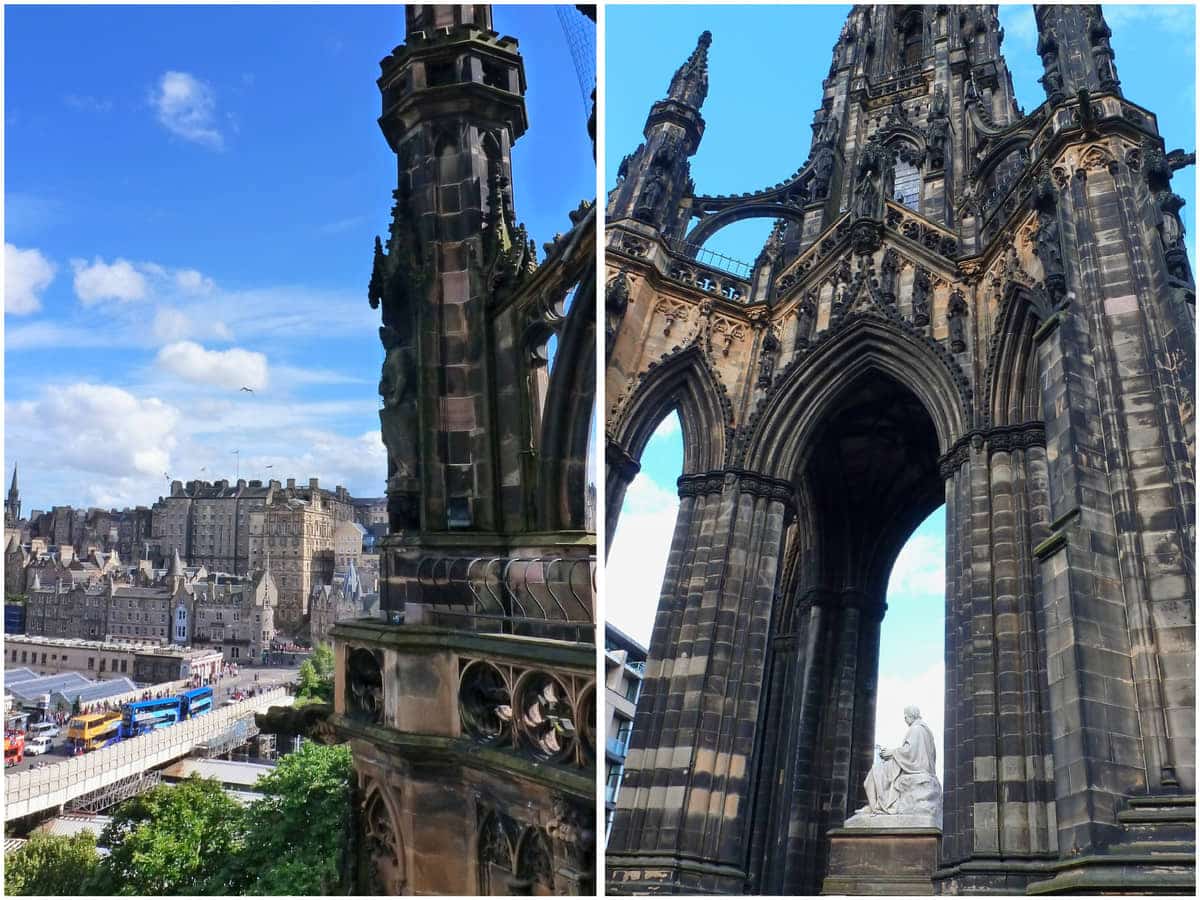
Address: East Princes St Gardens, Edinburgh, EH2 2EJ
Visitor guide: The Scott Monument
In the centre of Princes Street Gardens, not far from Waverley train station, stands one of the grandest man-made landmarks in Europe – the 200-foot Scott Monument. This beautiful Gothic-inspired structure is famous for being the world’s largest monument to a writer, and it has been an integral part of the Edinburgh cityscape since its completion in 1844.
Constructed from locally mined sandstone, the monument is dedicated to the Edinburgh novelist and poet Sir Walter Scott, who created many literary classics, including Ivanhoe and Rob Roy.
The design of the monument is inspired by the intricate designs of Rosslyn Chapel and Melrose Abbey and the attention to detail in the stonework can be clearly seen as you walk around the outside and gaze up towards the spires.
The Scott Monument is the perfect place to get an overview of the city as it features 287 steps leading up a spiral staircase which leads out onto a series of viewing platforms, each of which has superb panoramic views across Edinburgh’s city centre.
It’s from the platforms that you can really appreciate the architecture of the city, with Princes Street running east to west, the Old Town stretching out to the south, and the imposing Salisbury Crags of Holyrood Park to the southeast.
Frequently Asked Questions
What should I not miss in Edinburgh?
Some of the top historic tourist attractions in Edinburgh are:
1. Edinburgh Castle
2. Holyrood Palace
3. St. Giles Cathedral
4. The Museum on The Mound
5. Greyfriars Kirk
6. John Knox House
7. The Georgian House
8. Mary King’s Close
9. The Scott Monument
Can you walk around Edinburgh Castle for free?
Historic Environment Scotland, which oversees Edinburgh Castle, charges a fee to enter. A HES membership allows free unlimited re-admittance throughout the year.
What is the oldest building in Edinburgh?
The oldest building in Edinburgh is St. Margaret’s Chapel, which is located in Edinburgh Castle near the Mons Meg cannon. David I, St. Margaret’s son, constructed the chapel in the 12th century.
Is Edinburgh built on an old city?
Some parts of Edinburgh were built on top of old buildings and streets due to the Flodden Wall which enclosed the Old Town.
Unable to build further outwards, the city built high-rise tenement blocks and due to the lack of building space some buildings were constructed on top of existing streets. These can still be seen at Mary King’s Close and The Vaults near The Royal Mile.
Why is Edinburgh called Auld Reekie?
Before the Nor Loch was drained to create Princes Street Gardens, Edinburgh’s residents threw their waste into the loch which over time became stagnant.
Coupled with the tenement blocks where people emptied human waste into the streets below, the city became known for its bad smell – hence the name ‘Auld Reekie’.
What is the difference between Edinburgh’s Old Town and New Town?
The Old Town of Edinburgh is the earliest part of the city that extends away from Edinburgh Castle, along The Royal Mile and down to Holyrood Palace.
As the Old Town began to fall into ruin the city council built a new district between 1767 and 1850, which attracted rich and educated residents away from the Old Town.
Today, both the Old Town and the New Town are designated as UNESCO World Heritage Sites.

